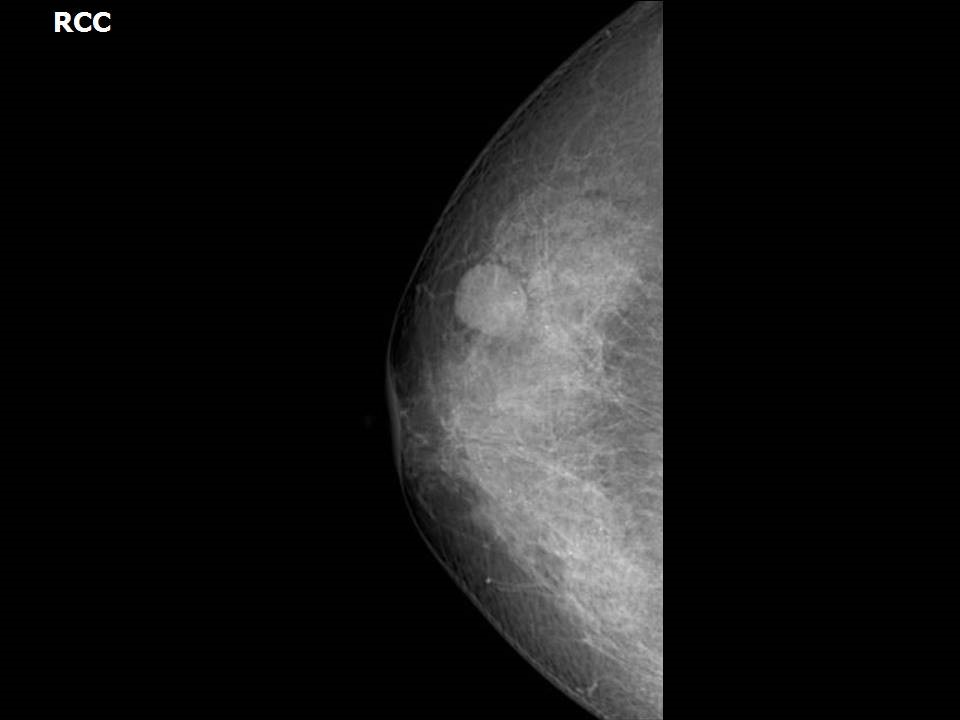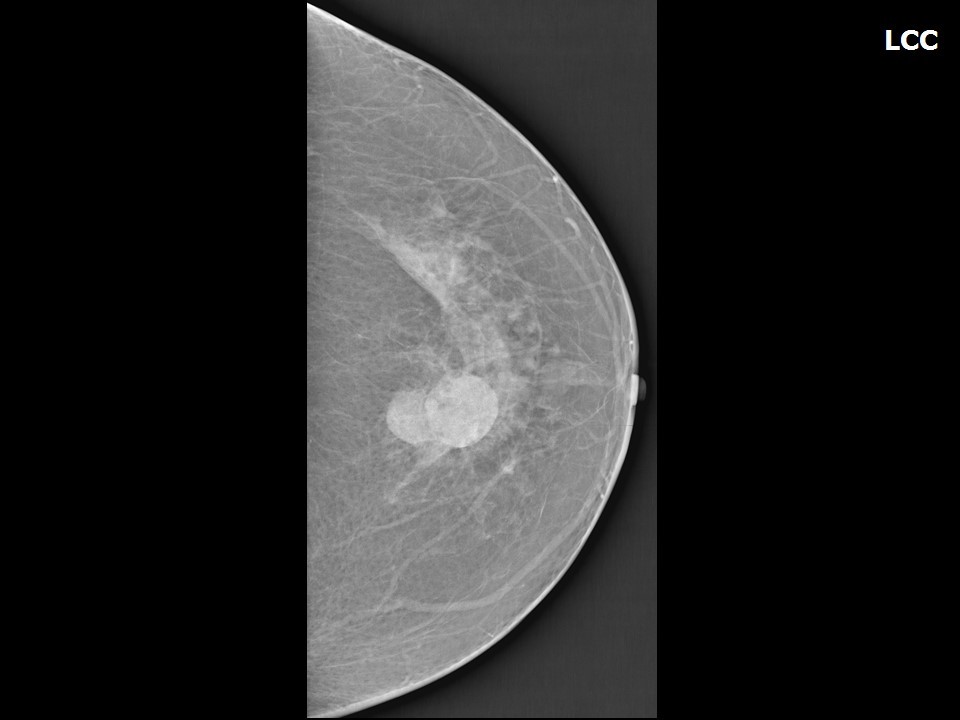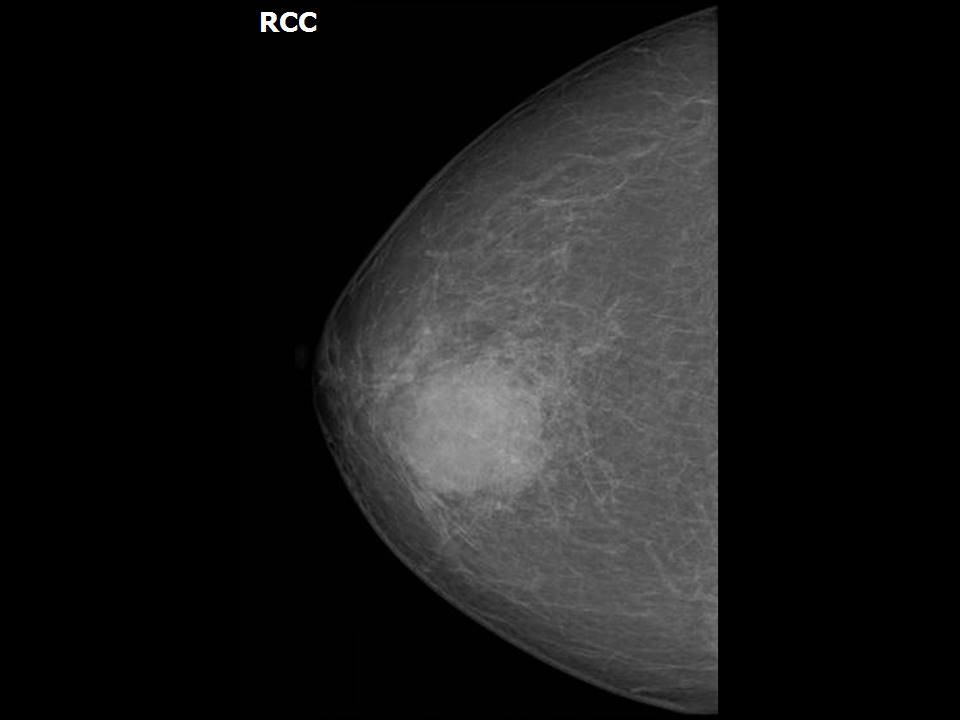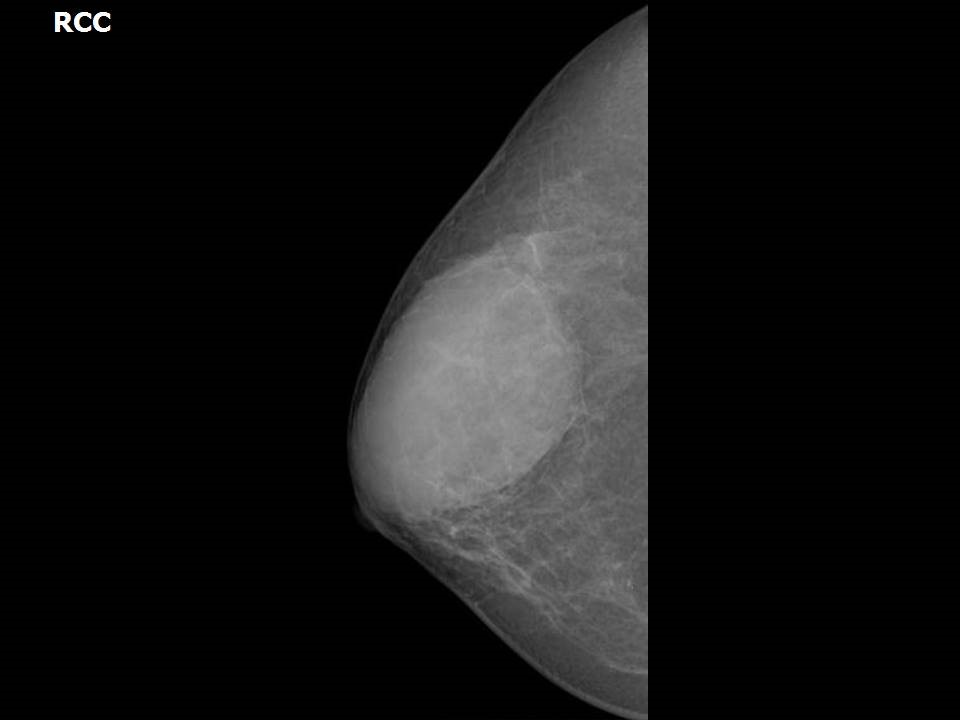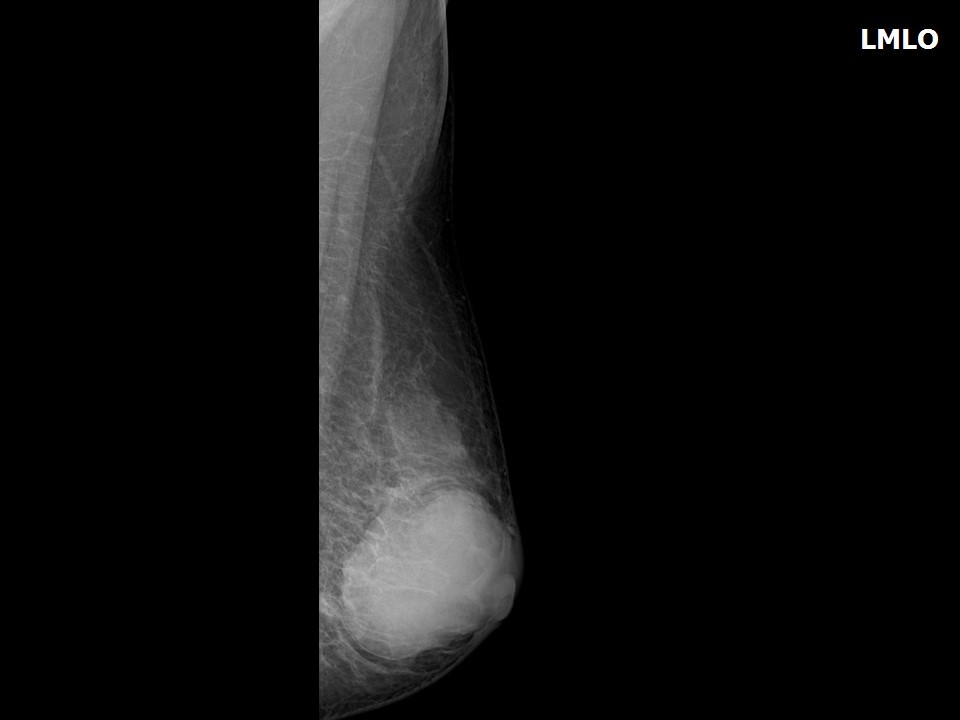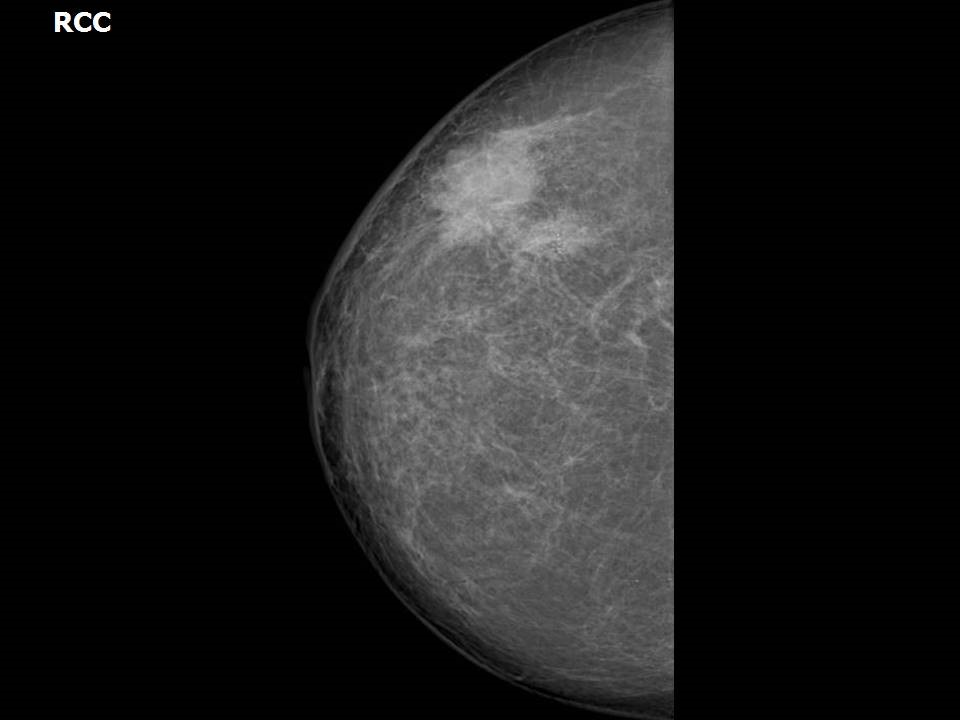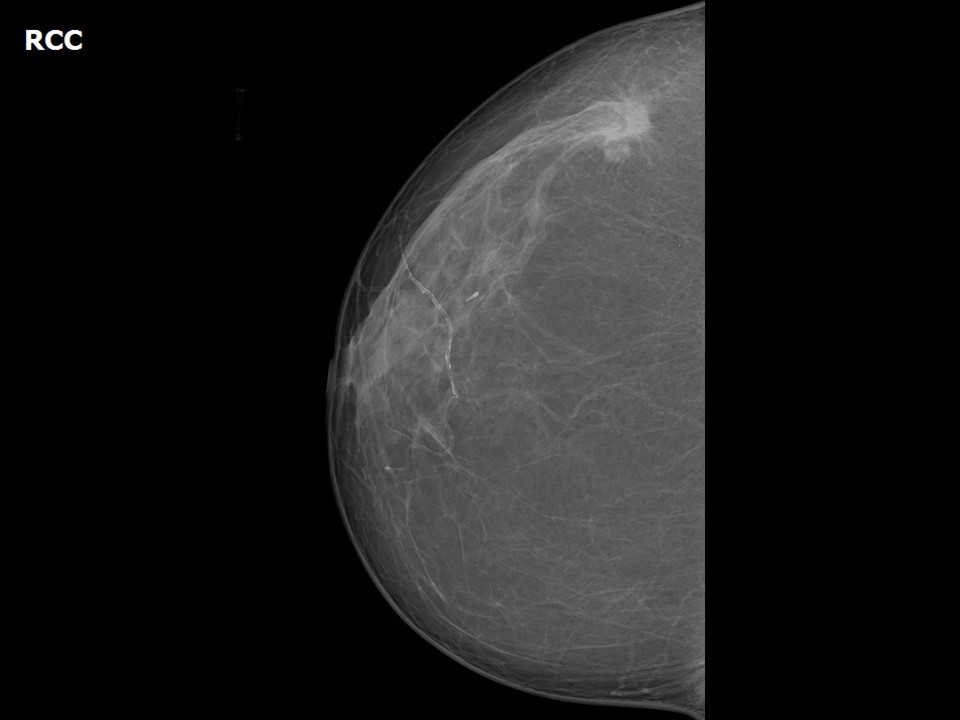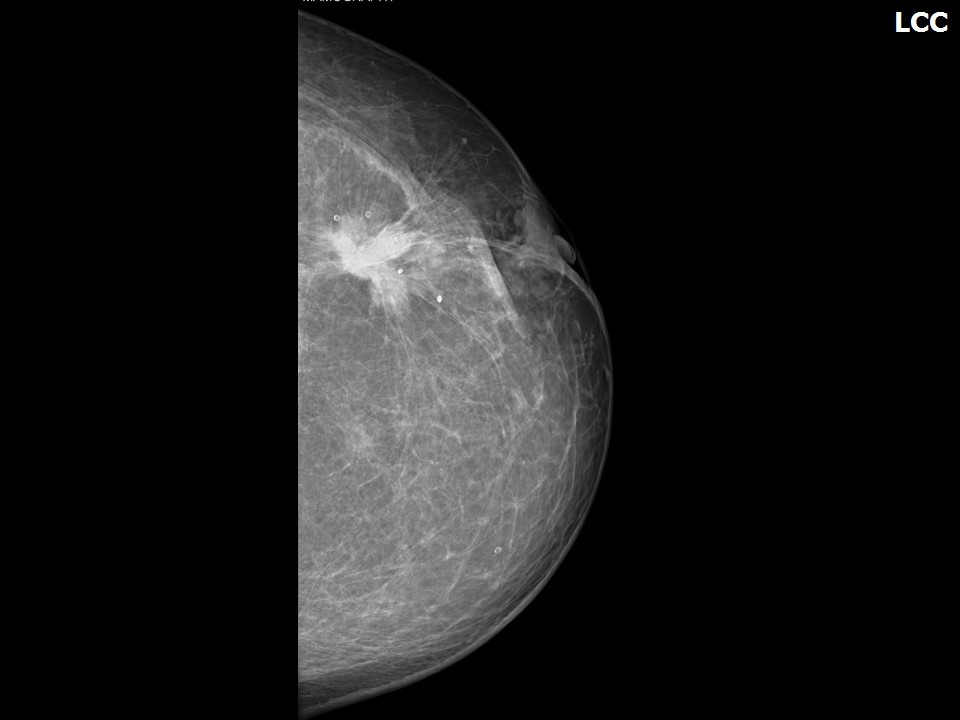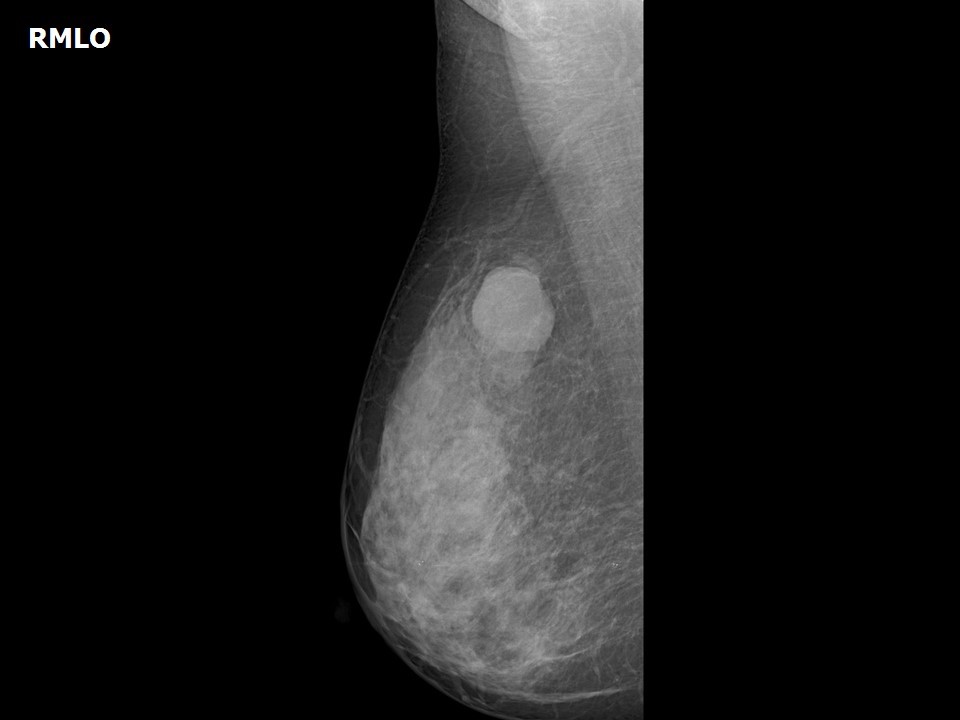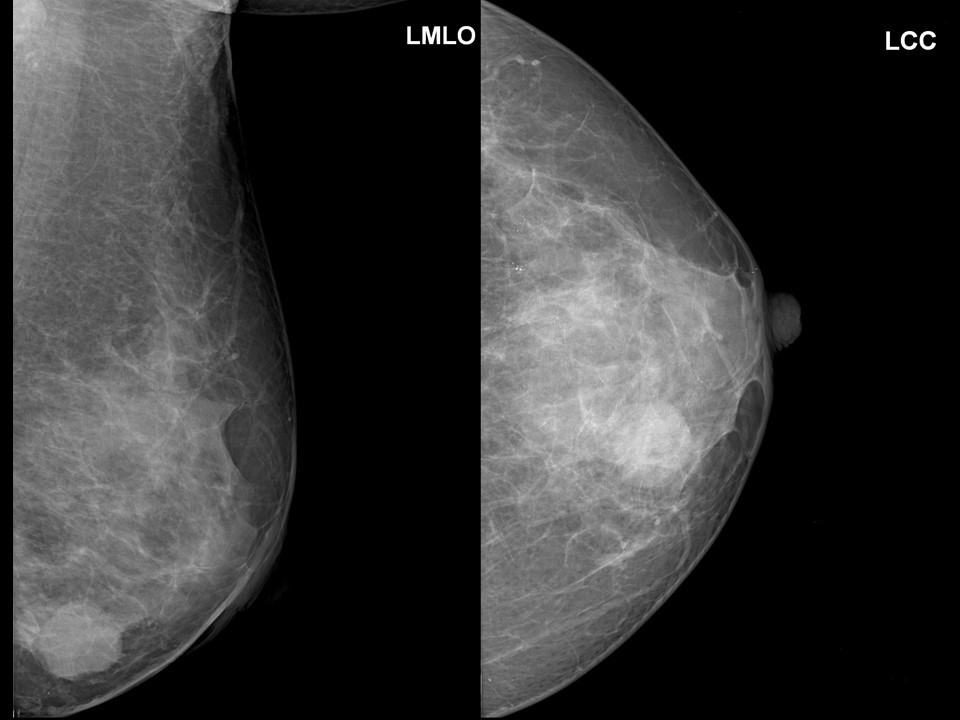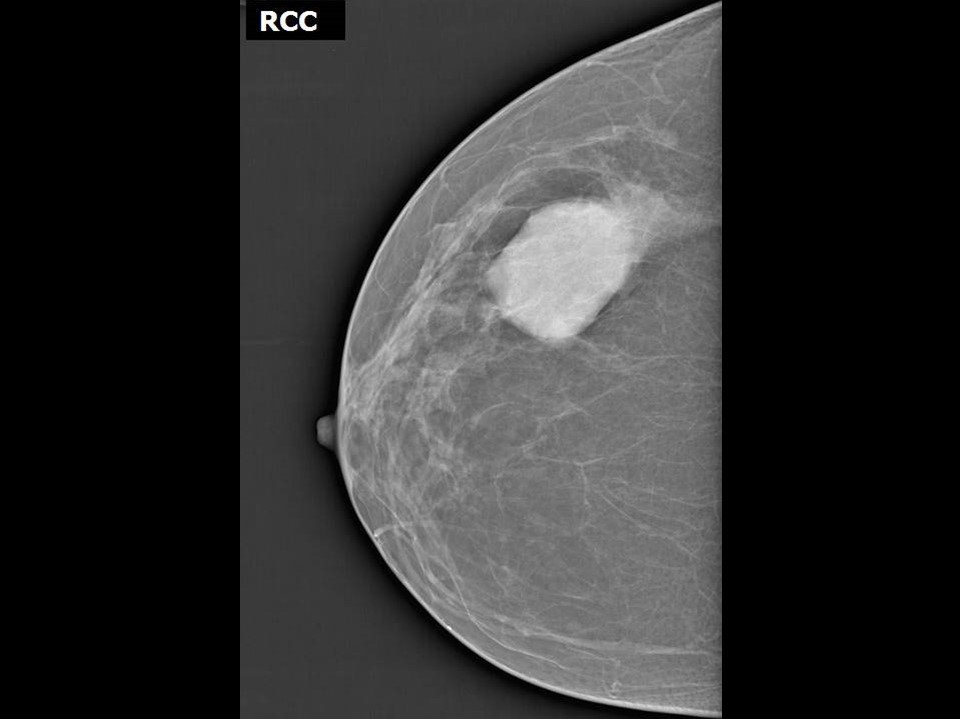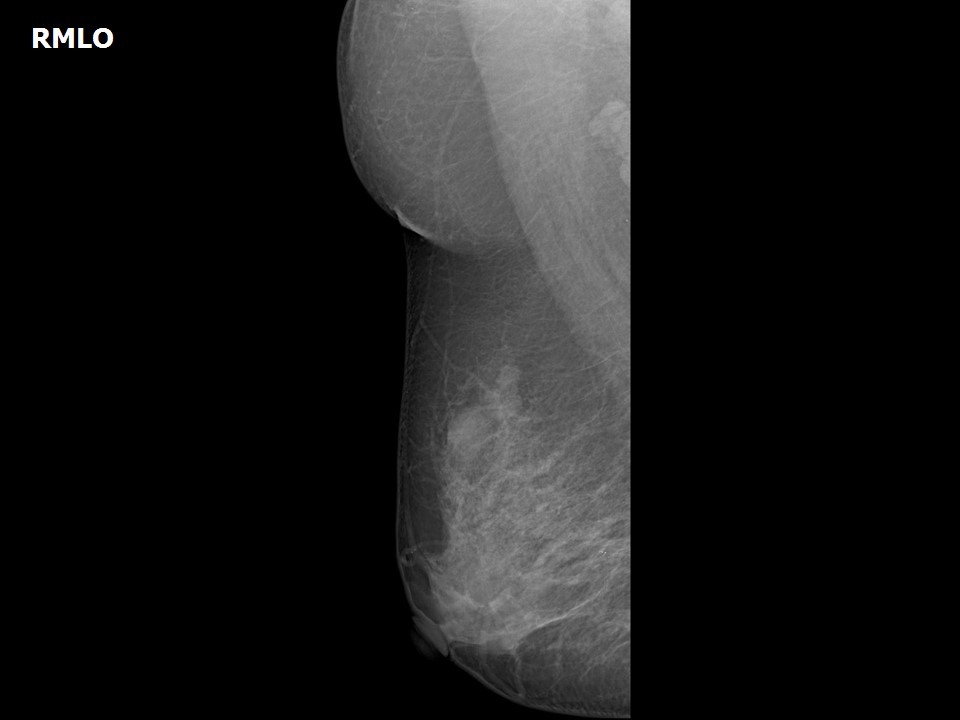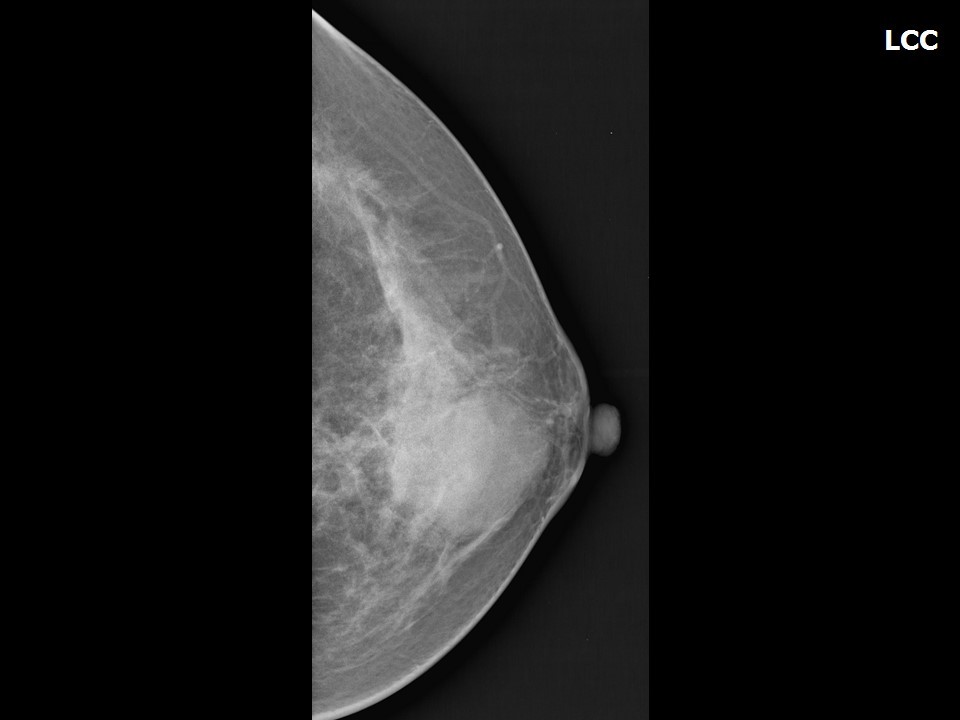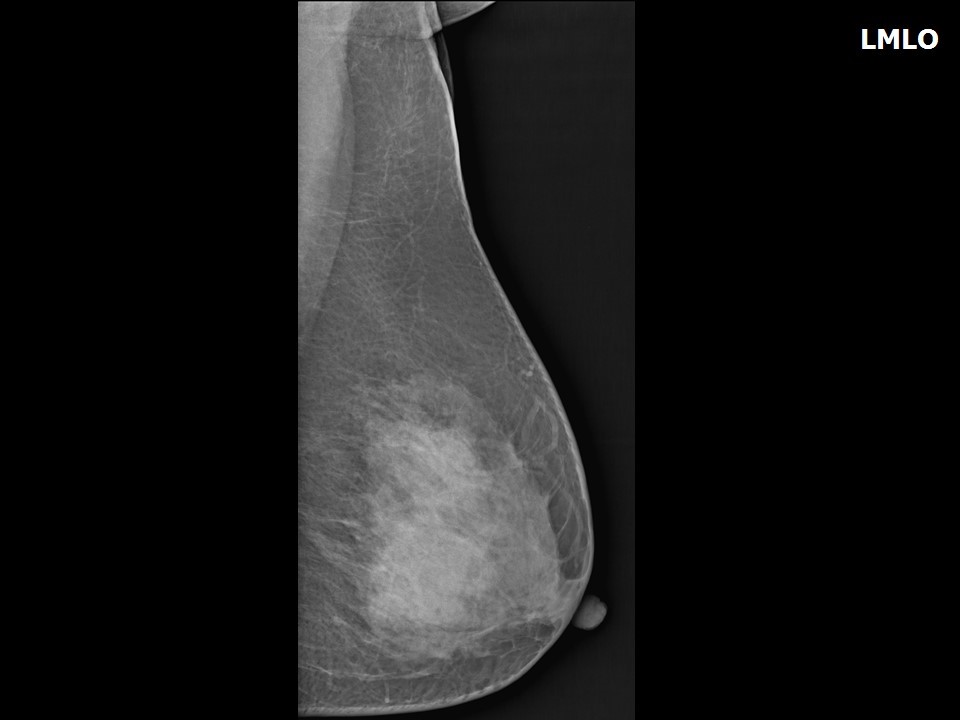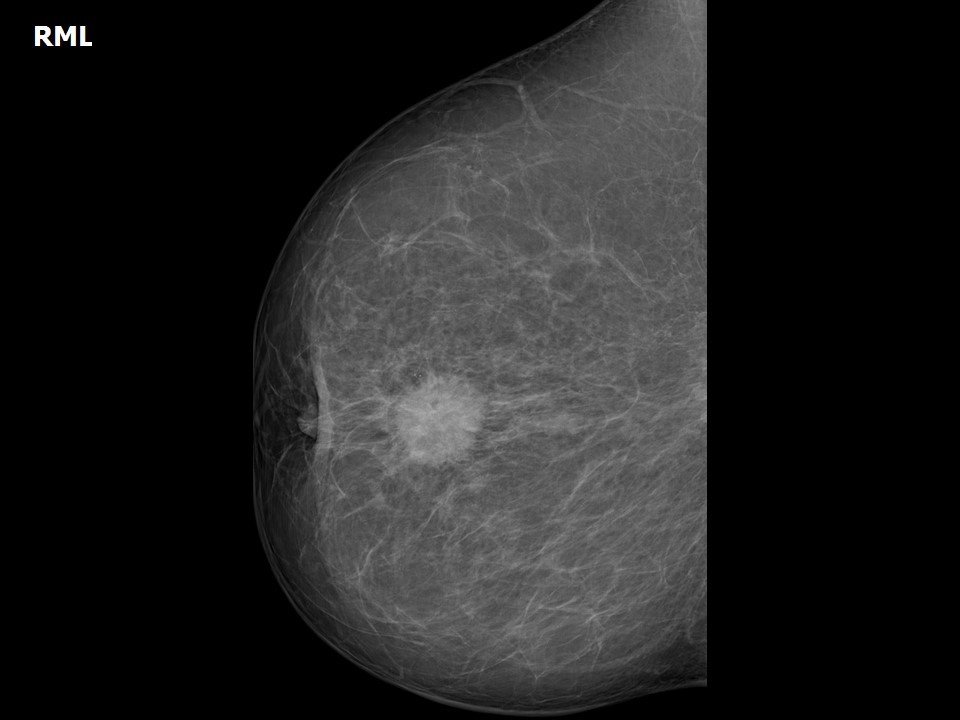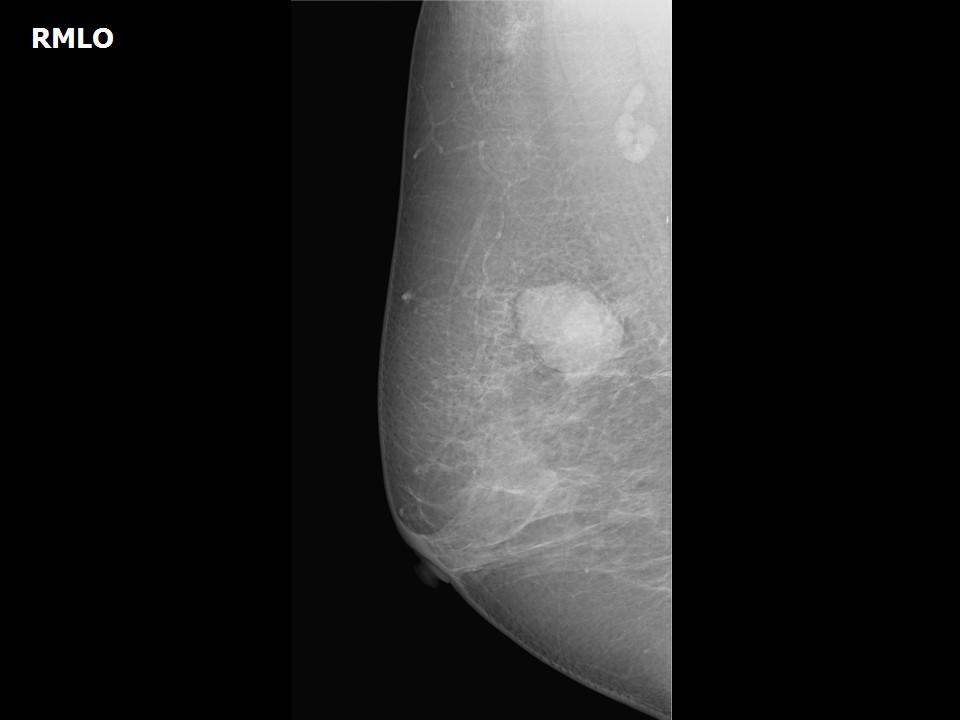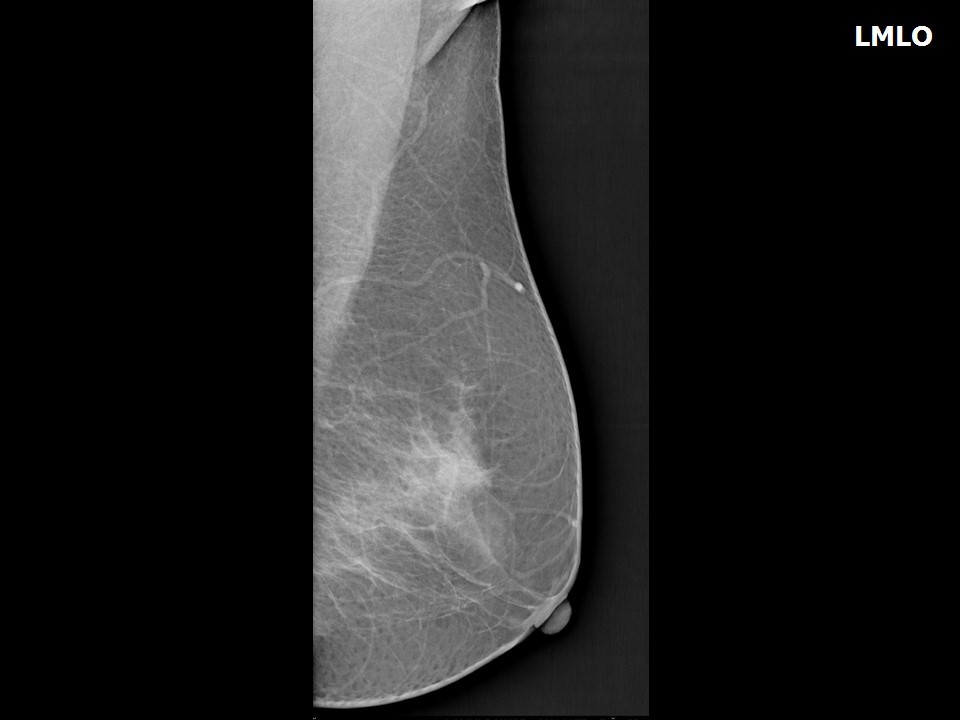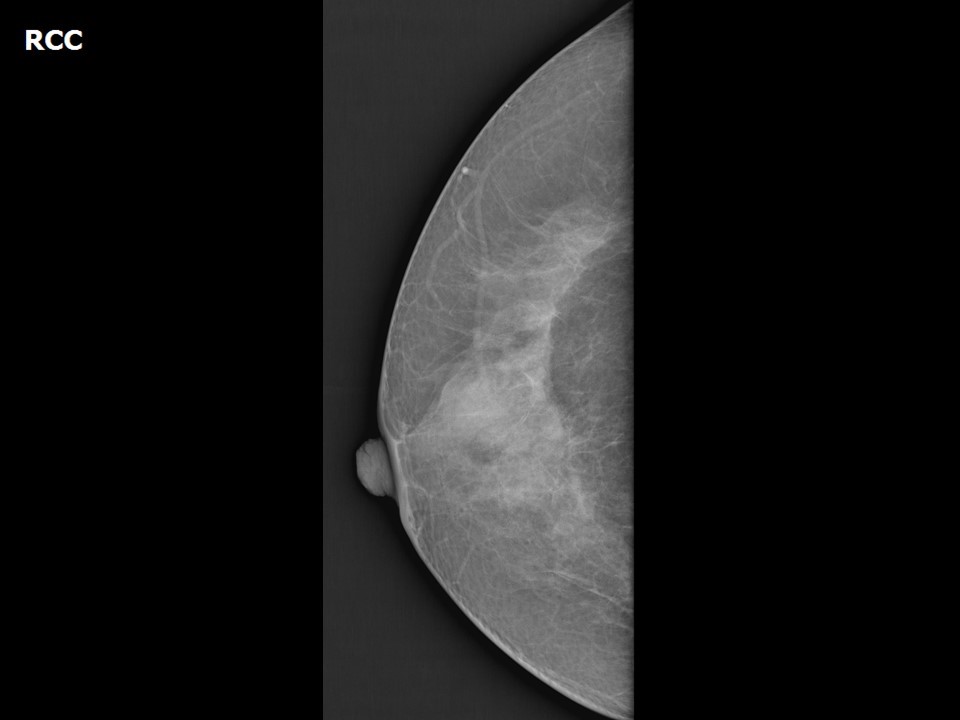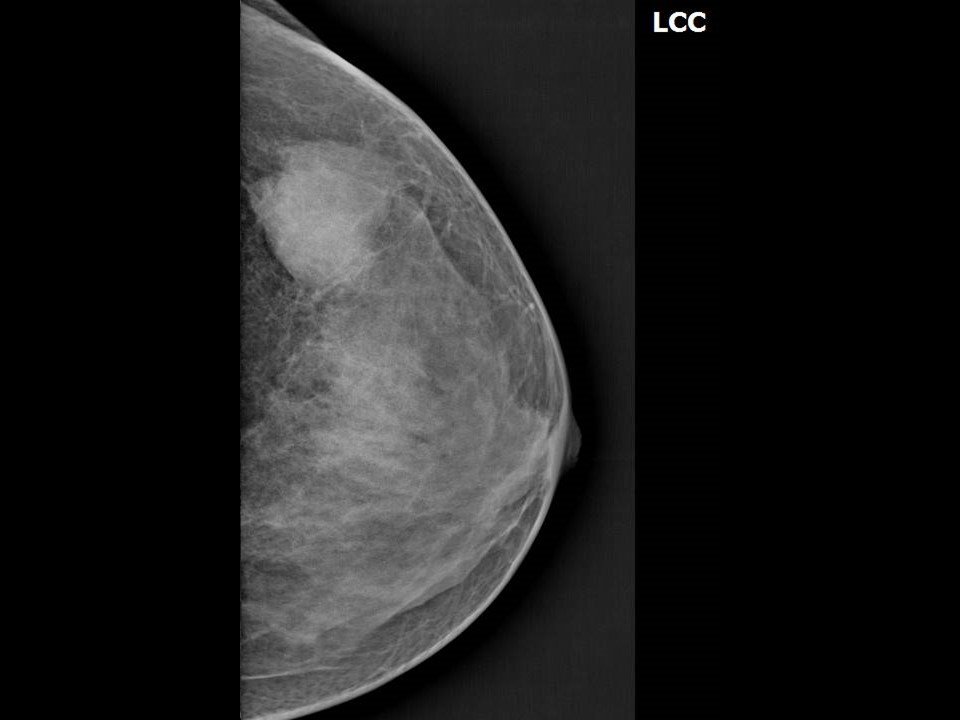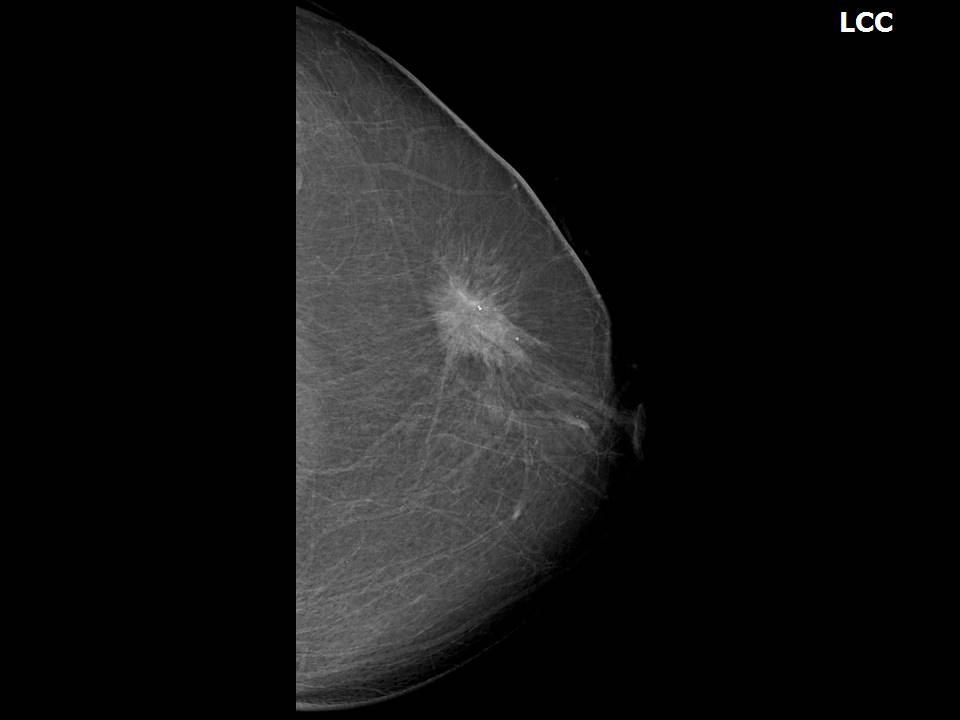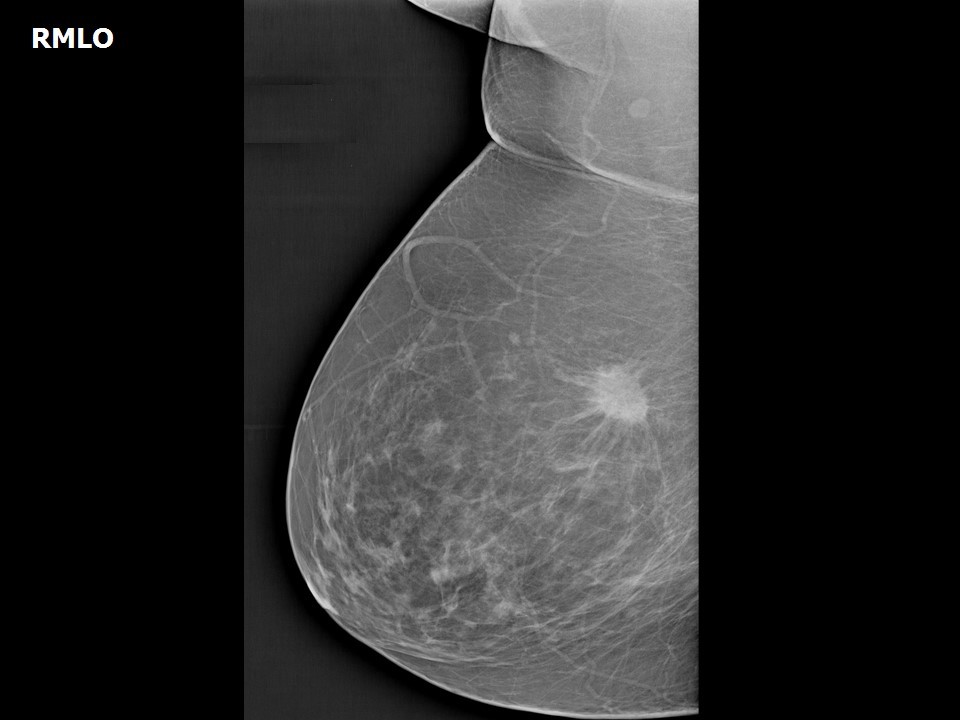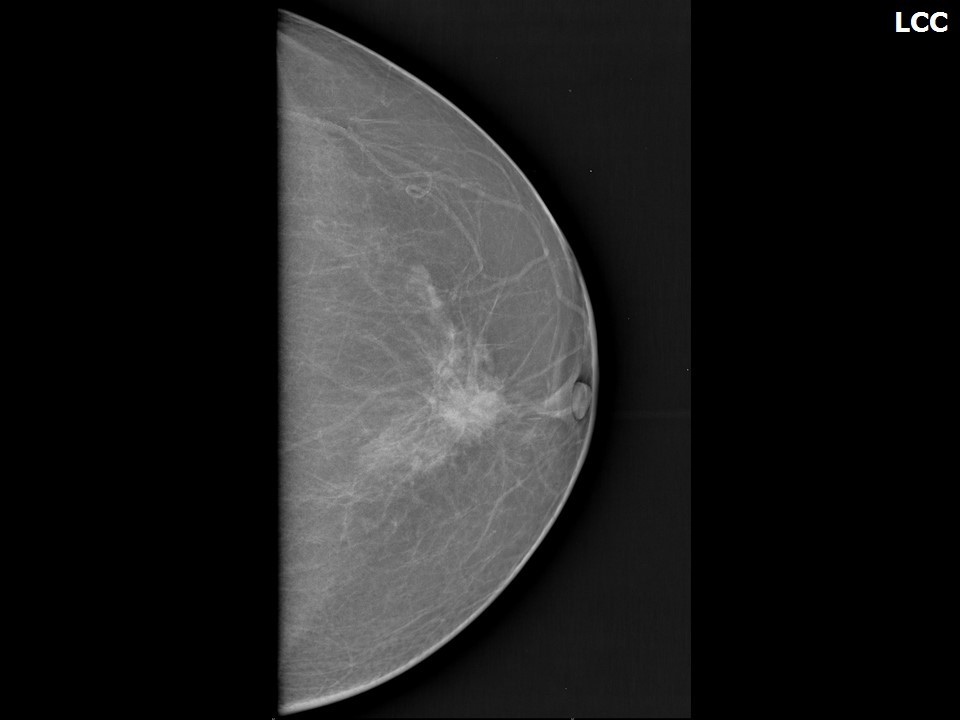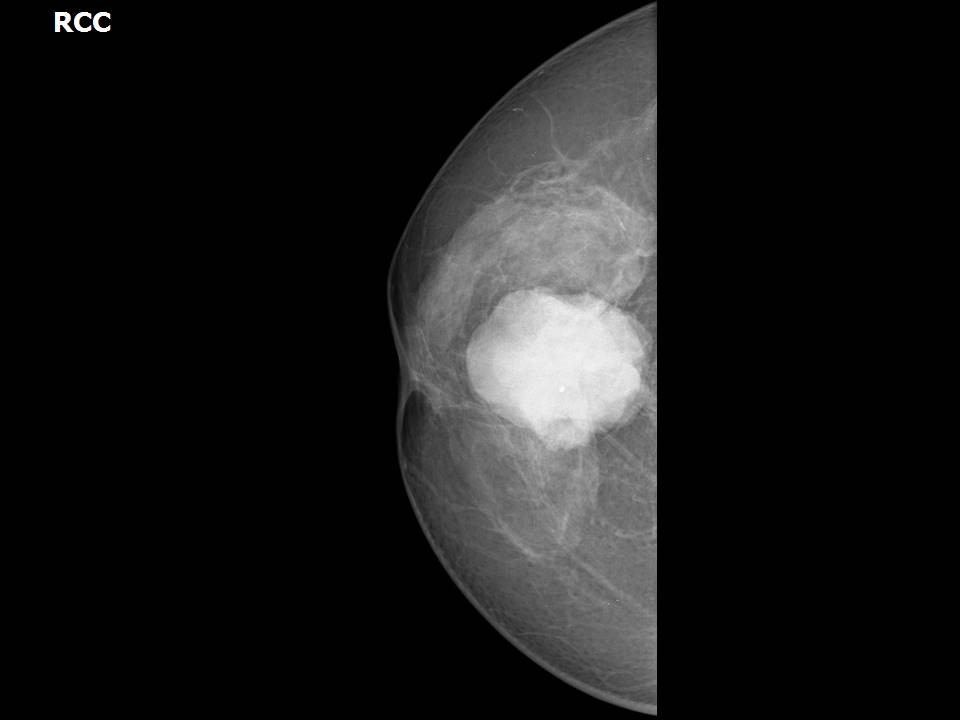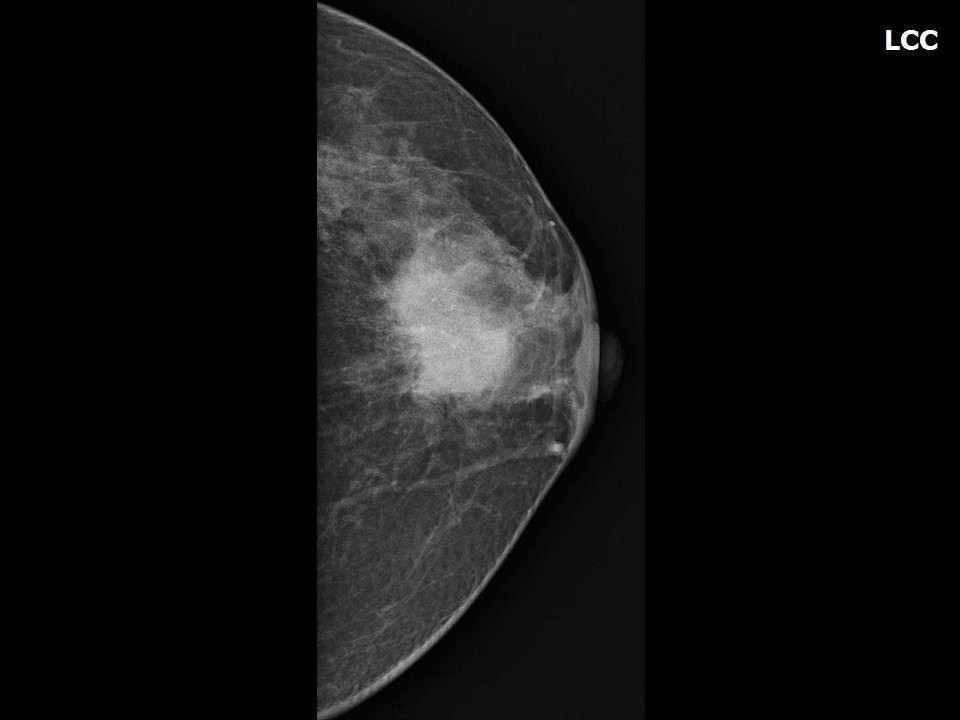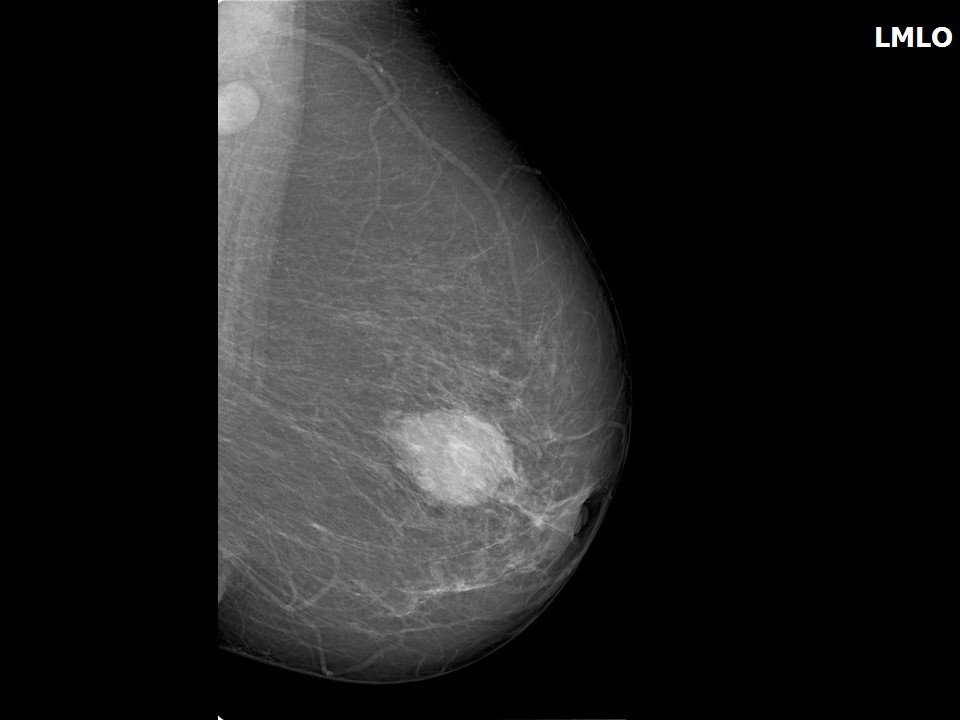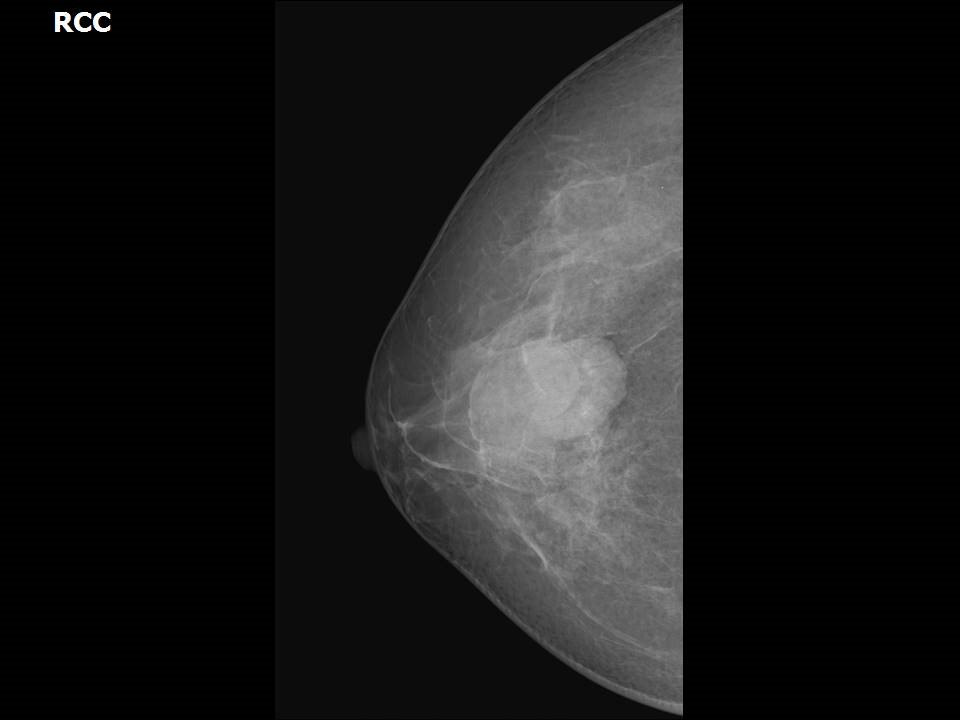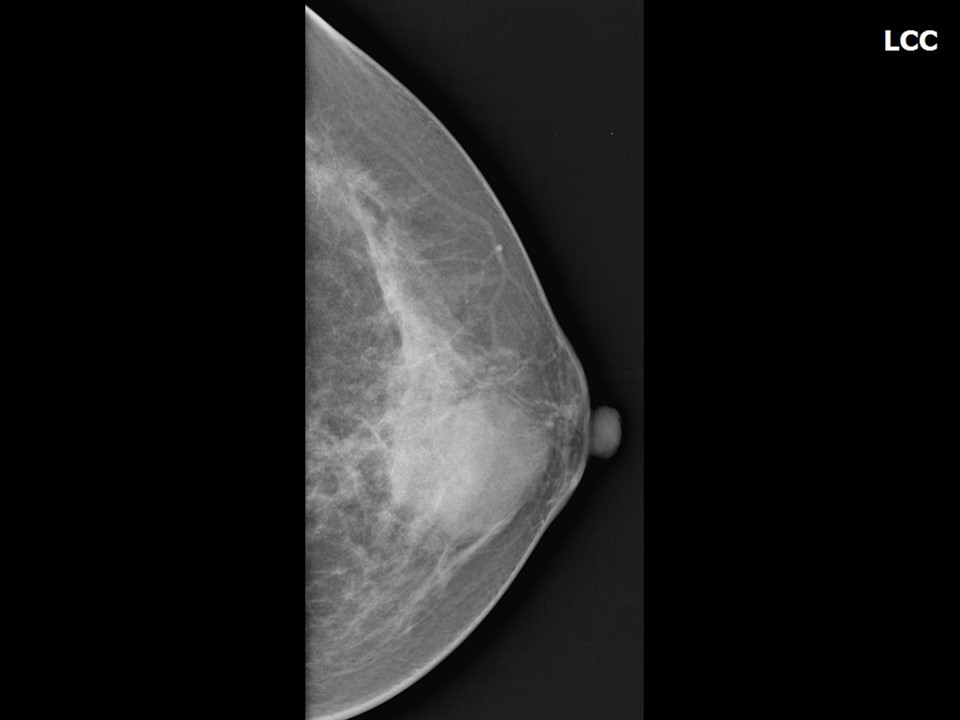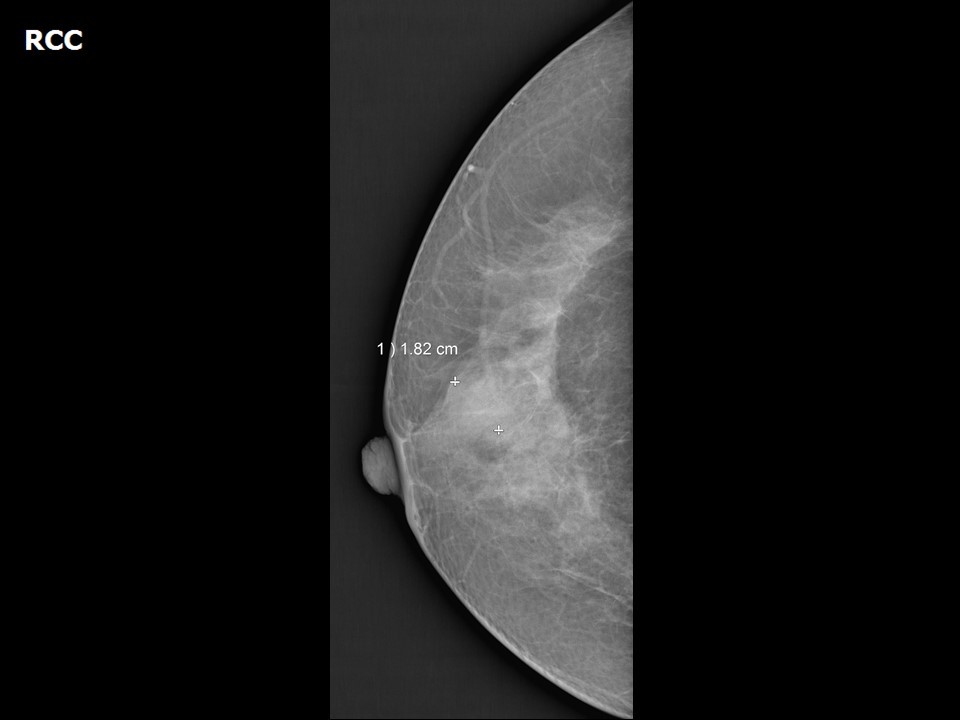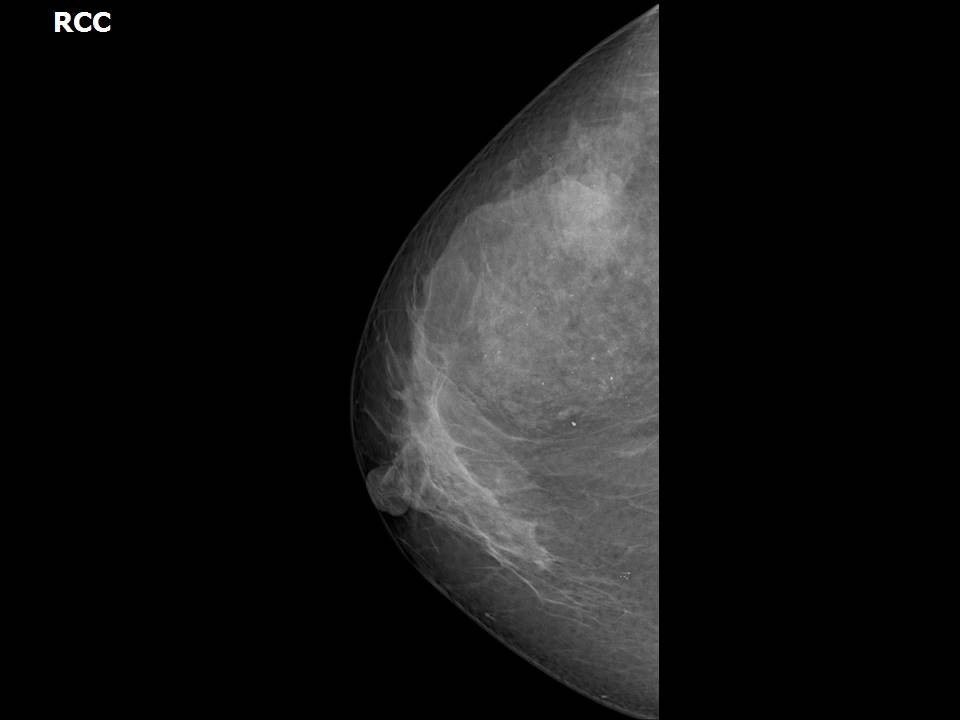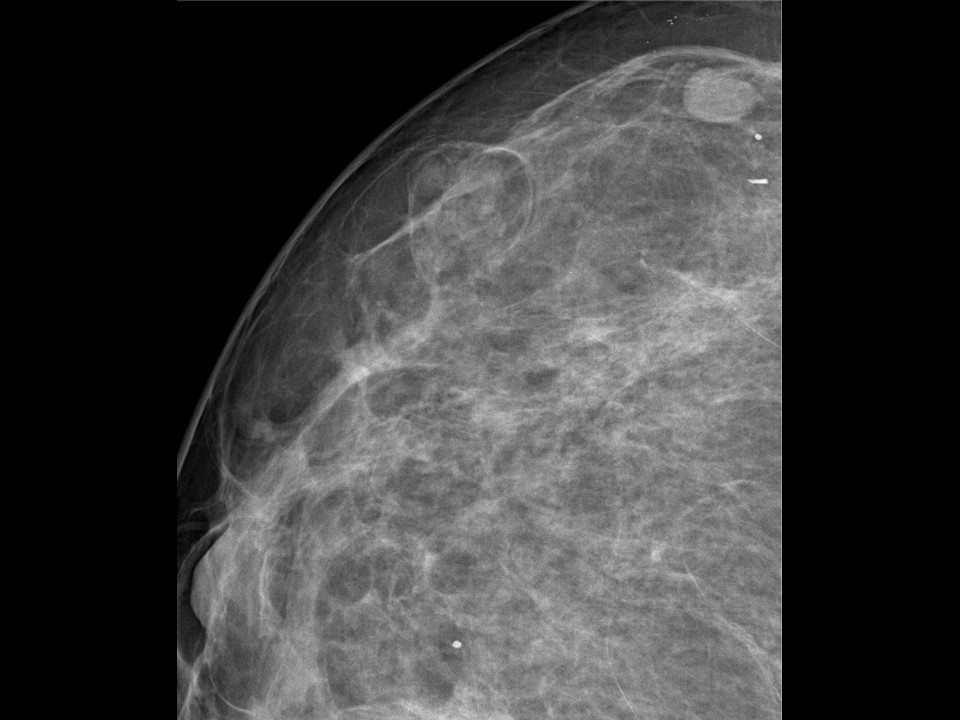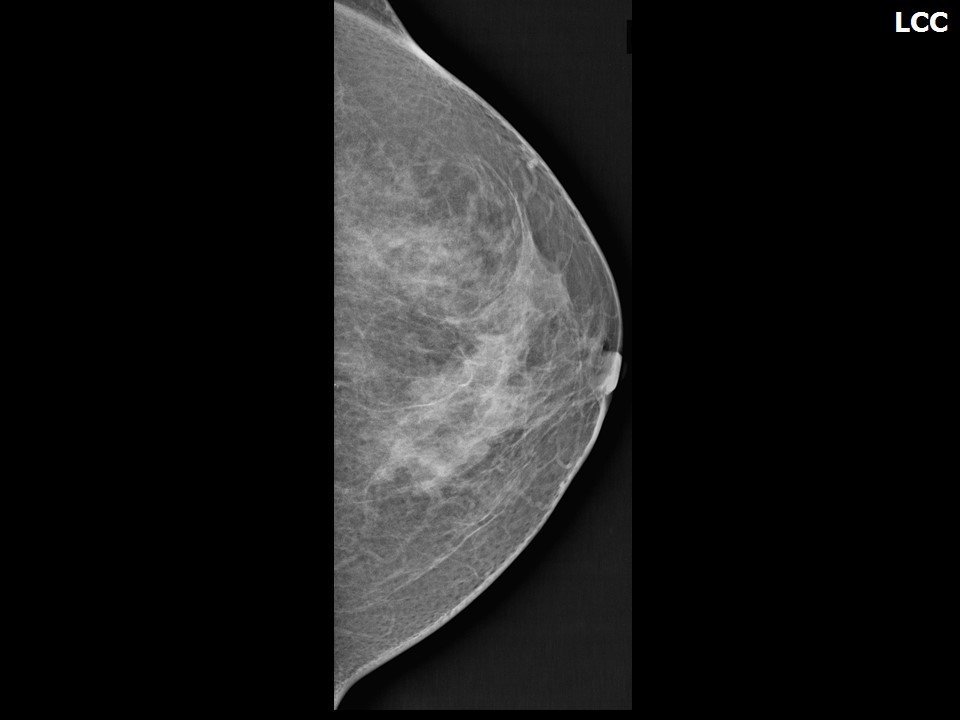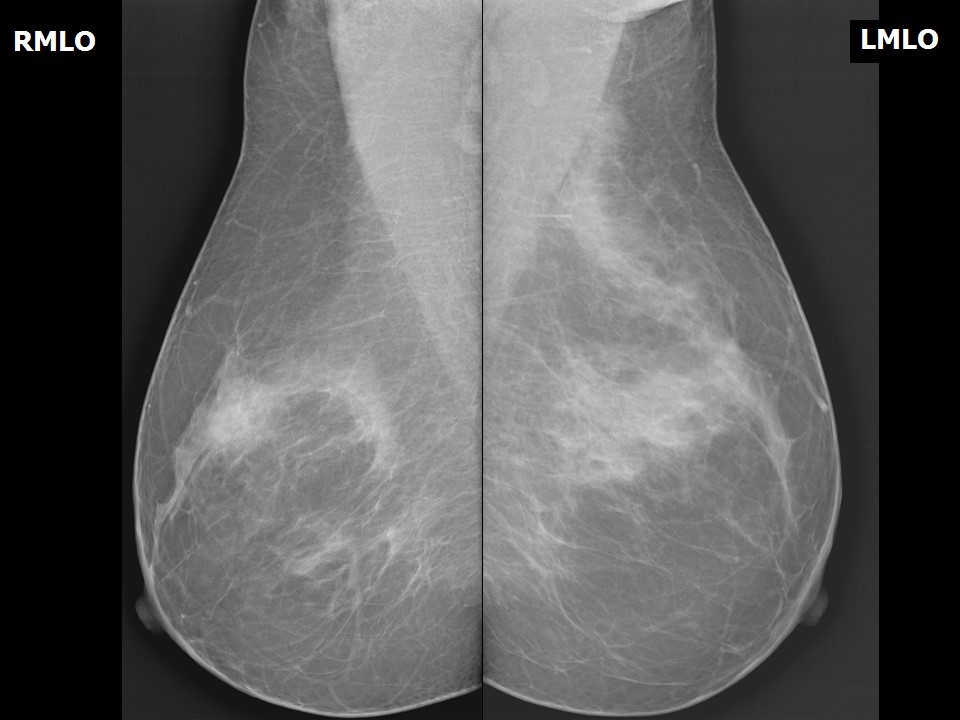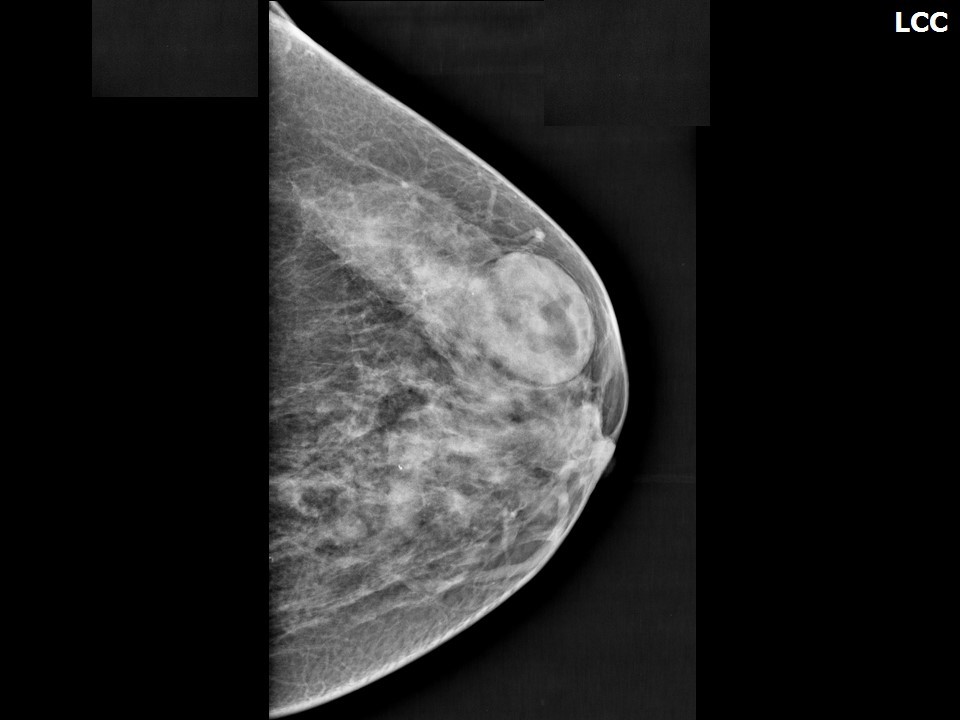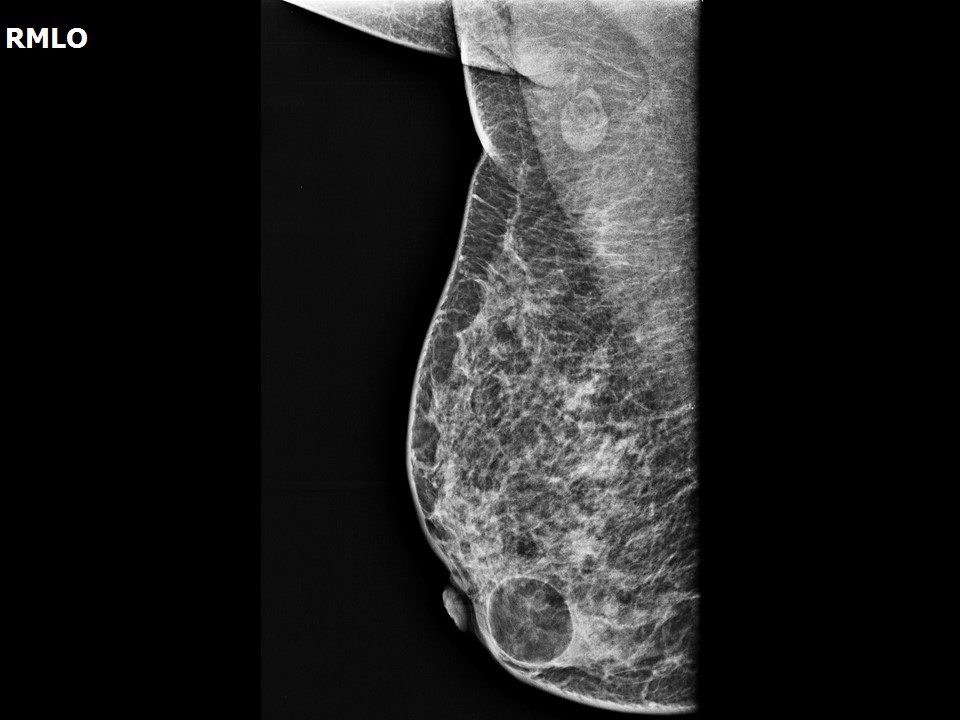Mass is a finding seen to be persistent in two different mammographic projections and is described by its shape, margins, and density.
Shape
The shape of the mass can be described as:
- round;
- oval (may include two or three gentle lobulations); or
- irregular (may have more than two or three gentle lobulations).
Round shape
Round shape is usually suggestive of a benign lesion. However, a well-demarcated cancer, such as intracystic papillary carcinoma, mucinous carcinoma, or medullary carcinoma, may be round in shape. Differential diagnoses include benign proliferative lesion, encapsulated papillary carcinoma  , and simple cyst  .
Other differential diagnoses include complicated cyst  , lymphoma, phyllodes, metastasis  ; invasive breast carcinoma  , and organised seroma  .
Oval shape
Oval shape is usually suggestive of a benign lesion. However, a well-demarcated cancer, such as mucinous carcinoma or metastasis, may be oval in shape. Differential diagnoses include fibroadenoma  , fibroadenoma with two smooth lobulations and benign calcification  , and medullary carcinoma  .
Other differential diagnoses include simple cyst  , complicated cyst  , intramammary node  , invasive breast carcinoma  , mucinous carcinoma, phyllodes, lymphoma, and metastasis  .
Irregular shape
Irregular shape is suspicious for malignancy  . Lesions of irregular shape may also be seen in women with a history of surgery as a result of, for example, scar tissue or seroma collection.
Margins
The margins of a mass indicate its demarcation from the adjacent normal breast parenchyma. They may be categorized as:
- circumscribed,
- obscured,
- microlobulated,
- indistinct, or
- spiculated.
Note that the features of the margins listed here are for a mass seen in a breast without any history of surgical interventions.
Circumscribed margin
This is more likely a feature of a possible benign mass. Differential diagnoses include fibroadenoma  , invasive breast carcinoma  , and simple cyst  .
Obscured margin
The margin may be obscured because of the superimposition of fibroglandular tissue over the mass. It may be a completely or partially obscured margin. Differential diagnoses include multifocal medullary carcinoma  , simple cyst  , and invasive breast carcinoma.
Microlobulated margin
A microlobulated margin is suspicious for breast carcinoma  . Other differential diagnoses include DCIS or fibrocystic change.
Indistinct margin
An indistinct margin is suspicious for malignancy. Indistinct indicates a lack of clear demarcation from the surrounding breast parenchyma, and leads to the possibility of infiltration. Differential diagnoses include invasive carcinoma  , papillary carcinoma  , fat necrosis  , metaplastic carcinoma  , and fibrocystic changes  .
Spiculated margin
A spiculated margin  is highly suggestive of malignancy. Differential diagnoses include postoperative scar  and fat necrosis.
Density
The density of a mass seen on mammography is compared with the adjacent fibroglandular tissue and is categorized as:
- high density,
- equal density,
- low density, or
- fat-containing.
High density
A lesion of high density is highly suggestive of breast carcinoma  .
Equal density
As a stand-alone feature, equal density is inconclusive to differentiate between a benign or malignant mass. The margins of the mass, any calcifications, and axillary nodes need to be seen. Differential diagnoses include fibroadenoma  , simple cyst  , and intraductal papillary carcinoma  .
Low density
Low density is a more likely feature of a benign lesion. Differential diagnoses include benign proliferative lesion  , fat necrosis  , and hamartoma  .
Fat-containing  
A mass visualized on mammography may be categorized as probable malignant or probable benign based on the combination of various features. A round or oval circumscribed mass of equal or low or fat-containing density is more likely to be a benign mass. An irregular not circumscribed mass of high density is more likely to be malignant mass.
| .png)





